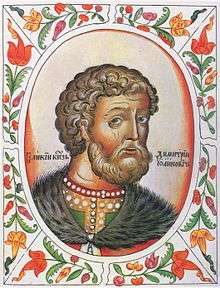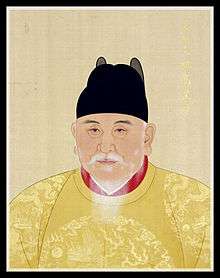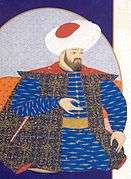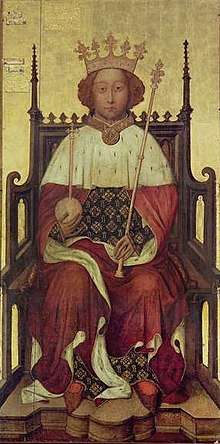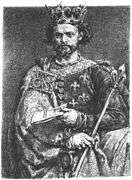14th century
| Millennium: | 2nd millennium |
|---|---|
| Centuries: | |
| Timelines: | |
| State leaders: | |
| Decades: | |
| Categories: | Births – Deaths Establishments – Disestablishments |
As a means of recording the passage of time, the 14th century was the century lasting from January 1, 1301, to December 31, 1400. Political and natural disasters ravaged both Europe and the four khanates of the Mongol Empire. Consequently, the Mongol court was driven out of China and retreated to Mongolia, the Ilkhanate collapsed in Persia, the Chaghatayid dissolved and broke into two parts and the Golden Horde lost its position as great power in Eastern Europe.
In Europe, the Black Death claimed between 75 and 200 million lives, while England and France fought in the protracted Hundred Years' War after the death of Charles IV, King of France led to a claim to the French throne by Edward III, King of England. This period is considered the height of chivalry and marks the beginning of strong separate identities for both England and France.
Events
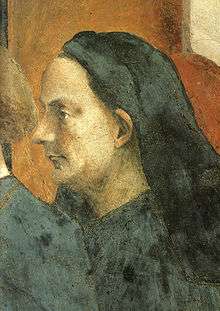

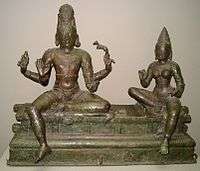
- The transition from the Medieval Warm Period to the Little Ice Age.
- Beginning of the Ottoman Empire, early expansion into the Balkans.
- Early 14th century: Attributed to Kao Ninga Monk Sewing is made. Kamakura period. It is now kept at The Cleveland Museum of Art.
- An account of Buddha's life, translated earlier into Greek by Saint John of Damascus and widely circulated to Christians as the story of Barlaam and Josaphat, became so popular that the two were venerated as saints.[2]
- Singapore emerges for the first time as a fortified city and trading centre of some importance.
- Islam reaches Terengganu, on the Malay Peninsula.
- The Hausa found several city-states in the south of modern Niger.
- The poet Petrarch coins the term Dark Ages to describe the preceding 900 years in Europe, beginning with the fall of the Western Roman Empire in 476 through to the renewal embodied in the Renaissance.
- Iwan vault, Jamé Mosque of Isfahan, Isfahan, Persia (Iran), is built.
- Work begins on the Great Enclosure at Great Zimbabwe, built of un-cemented, dressed stone. The city's population is now between 10,000 and 40,000.
1300s
- 1309 — King Jayanegara succeeds Kertarajasa Jayawardhana as ruler of Majapahit.[3]
- 1309-1377 — The Avignon papacy transfers the seat of the Popes from Italy to France
1310s
- The Great Famine of 1315-1317 kills millions of people in Europe.
- 1318-1330 — An Italian Franciscan monk, Mattiussi visited Sumatra, Java, and Banjarmasin in Borneo. In his record he described the kingdom of Majapahit.
1320s
- January 20 1320 — Władysław I the Elbow-high is crowned King of Poland which leads to its later unification
- 1323 — Malietoafaiga ordered cannibalism to be abolished in Tutuila, now known as American Samoa.
- 1325 — Forced out of previous locations, the Mexica found the city of Tenochtitlan
- 1328 — Tribhuwana Wijayatunggadewi succeeds Jayanegara as ruler of Majapahit.
- Beginning of the Renaissance in Italy
1330s
- 1335 — The death of the Ilkhan Abu Said, causes the disintegration of the Mongol rule in Persia.
- 1336 — The Vijayanagara Empire is founded in South India by Harihara
- 1337 — The Hundred Years' War begins when Edward III of England lays claim to the French throne.
1340s

- 1346 — English forces led by Edward III defeat a French army led by Philip VI in The Battle of Crécy, a major point in the Hundred Years' War which marks the rise of the longbow as a dominant weapon in Western Europe.
- 1347–1351 — The Black Death kills around a third of the population of Europe.
- 1347 — Adityawarman moved the capital of Dharmasraya and established the kingdom of Malayupura in Pagarruyung, West Sumatra.[4]
1350s
- 1350 — Hayam Wuruk, styled Sri Rajasanagara, succeeds Tribhuwana Wijayatunggadewi as ruler of Majapahit; his reign is considered the empire's 'Golden Age'.[3] Under its military commander Gajah Mada, Majapahit stretches over much of modern-day Indonesia.
- 1356 — The Imperial Diet of the Holy Roman Empire headed by Emperor Charles IV issues the Golden Bull of 1356, establishing various constitutional aspects of the Empire, most importantly the electoral college to elect future emperors.
- 1356 — The Diet of the Hansa is held in Lübeck, formalising what up until then had only been a loose alliance between trading cities in northern Europe and officially founding the Hanseatic League.
- 1357 — Scotland retains her independence with the signing of the Treaty of Berwick, thus ending the Wars of Scottish Independence.
- 1357 — In the Battle of Bubat, the Sundanese royal family was massacred by the Majapahit army under the order of Gajah Mada; the death toll including Sundanese King Lingga Buana and the princess Dyah Pitaloka Citraresmi who committed suicide.[5]
1360s
- 1363 — The Battle of Lake Poyang, a naval conflict between Chinese rebel groups led by Chen Youliang and Zhu Yuanzhang, took place from August to October, and was one of the largest naval battles in history.
- 1365 — The Old Javanese text Nagarakertagama is written.[3]
- 1366 — Tepanec Tlatoani Acolnahuácatl accepts Acamapichtli as the first tlatoani of Tenochtitlan for the Mexica Empire
- 1368 — The end of Mongol Yuan Dynasty in China and the beginning of the Ming Dynasty
1370s
- 1377 — Majapahit sends a punitive expedition against Palembang in Sumatra. Palembang's prince, Parameswara (later Iskandar Syah) flees, eventually finding his way to Malacca and establishing it as a major international port.[3]
- 1378 — The Great Schism of the West begins, eventually leading to 3 simultaneous popes.
- 1378-1382 — Ciompi Revolt occurs in Florence
1380s
- 1381 — John Wycliffe is dismissed from the University of Oxford for criticism of the Roman Catholic Church thus, the Lollardy movement rises in England
- 1381 — Peasants' Revolt in England
- 1385 — Union of Krewo between Poland and Lithuania
- 1389 — Battle of Kosovo between Serbs and Ottoman Turks, Prince Lazar, sultan Murat I and Miloš Obilić were killed
- 1389 — Wikramawardhana succeeds Sri Rajasanagara as ruler of Majapahit.[3]
1390s
- 1392 — Taejo of Joseon establishes the Joseon Dynasty.
- 1397 — The Kalmar Union is established, uniting Norway, Sweden and Denmark into one kingdom.
Significant people
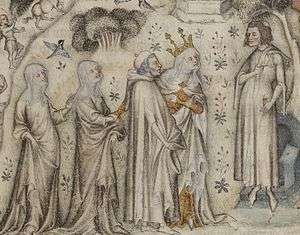
- Ibn Battuta, Berber Muslim traveler (1304–1368/1377)
- Liu Bowen, Chinese general, court advisor, philosopher, and co-editor of the Huolongjing
- Geoffrey Chaucer, English writer and author of The Canterbury Tales
- Alauddin Khalji, Afghanized Turk emperor, ruling from Delhi over South Asia, crushing Mongol invasions and Rajput rebellions
- Ibn Khaldun, historian and historiographer
- William of Ockham, English Franciscan friar and philosopher (c. 1285–1347)
- Timur the Lame
- Margaret I of Denmark, Danish regent and from 1389 regent of the united monarchies of Denmark, Norway and Sweden
- Ibn Taymiyyah, Islamic scholar, theologian and logician
- Chen Youliang, Chinese rebel leader and nemesis to Zhu Yuanzhang (the Hongwu Emperor)
- Jiao Yu, Chinese general and author of the Huolongjing military treatise
- Henry IV of England, King from 1399 until his death in 1413
- John Kukuzelis, Byzantine composer, singer and reformer of Orthodox Church music (c. 1280–1360)
- John Wycliffe, Biblical translator, theologian, philosopher (1320-1384)
- Philippe de Vitry, French composer, music theorist and poet (1291-1361)
- Guillaume de Machaut, French composer and poet (c. 1300–1377)
Artists
- Giotto di Bondone, Italian painter (c. 1267–1337)
- Simone Martini, Italian painter (1284 – c. 1344)
- Stephen of Perm, Russian icon painter (1340–1396)
Architects
- Filippo Brunelleschi, Italian architect and engineer
- Henry Yevele, prominent English architect responsible for the building of many important structures in London (1320-1400)
Literary figures
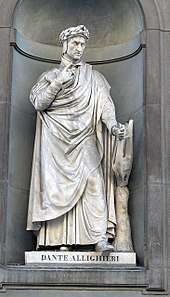
- Dante Alighieri, Italian poet and writer (1265–1321)
- Francesco Petrarca (Petrarch), Italian poet and writer (1304–1374)
- Giovanni Boccaccio, Italian poet and writer (1313–1375)
- Hafiz, Persian poet (c. 1310–1379)
- William Langland (ca. 1332 – ca. 1386) is the conjectured author of the English dream-vision Piers Plowman
- Juan Manuel, Prince of Villena, Spanish author (1282–1349)
- Christine de Pizan, French writer (1364–1430)
- Shi Nai'an (1296—1372), Chinese writer; author of Water Margin
- Luo Guanzhong (1330–1400), Chinese writer; author of Romance of the Three Kingdoms
- Johannes Gutenberg (1398-1468), German printer and inventor; author of Gutenberg Bible
Monarchs

- Mansa Musa (d. 1337), King of the Mali Empire. During his reign Mali was the source of almost half the world's gold.
- Amda Seyon I (1314–1344), Emperor of Ethiopia. Consolidated the power of his domain beyond the Ethiopian highlands, initiating a long era of Christian proselytization and integration of peripheral areas
- Timur (1336–1405) Central Asian warlord and founder of the Timurid Dynasty
- Hongwu Emperor (1328–1398), founder of the Ming dynasty in China.
- Alauddin Khalji, Emperor of Northern India
- Muhammad bin Tughluq, Emperor of India
- Osman I (1258–1326, Osman Gazi or Osman Bey or I.Osman or Osman Sayed II) leader of the Ottoman Turks, founder of the dynasty that established and ruled the Ottoman Empire.
- Robert the Bruce (1274–1329) King of Scotland, victor in the First War of Scottish Independence against invasion by the Kingdom of England.
- Edward II (1284–1327?) of Caernarfon, was King of England from 1307 until he was deposed in January 1327.
- Roger de Mortimer, 1st Earl of March (1287–1330) an English nobleman, was for three years de facto ruler of England, after leading a successful rebellion against Edward II.
- Charles I of Hungary (1288–1342) military, diplomatic and financial reformer, restoring the Kingdom of Hungary to power.
- Ivan I of Moscow (1288–1340) called The Moneybag, was Prince of Moscow, who made his principality most powerful state in Russia.
- Isabella of France (c. 1295–1358) queen consort and regent of the Kingdom of England.
- Stephen Uroš IV Dušan of Serbia (1308–1355) Emperor of the Serbs and Greeks.
- Casimir III of Poland (1312–1377) expansionist and financial reformer.
- Joan of the Tower (1321–1362) a.k.a. Joan of England, was the first wife and Queen consort of David II of Scotland. She was born at the Tower of London and was the youngest daughter of Edward II of England and Isabella of France.
- David II of Scotland (1324–1371) King of Scots, son of King Robert the Bruce by his second wife, Elizabeth de Burgh (d. 1327), was born at Dunfermline Palace, Fife.[6]
- Edward III (1327–1377) King of England. His claim to the throne of France resulted in the Hundred Years' War.
- Edward, the Black Prince (1330–1376) or Edward of Woodstock, Prince of Wales, KG, was the eldest son of King Edward III of England and Philippa of Hainault, and father to King Richard II of England.
- Philip VI of France (1293-1350), called the Fortunate, was King of France from 1328 to his death and was the first king of France from the House of Valois.
- John II of France (1319-1364), called the Good, was King of France from 1350 to his death and a member of the House of Valois.
- Charles V (1338–1380), called the Wise, was King of France from 1364 to his death and a member of the House of Valois.
- Charles VI of France (1368-1422), called the Mad, had a reign troubled by his controlling uncles during his minority and Charles' bouts of insanity, was King of France from 1380 to his death and a member of the House of Valois.
- Louis the Great of Hungary (king: (1342–1382) King of Hungary, Croatia, Dalmatia, Jerusalem, Sicily and Poland from 1370. He led campaigns From Lithuania to Southern Italy, From Poland to Northern Greece. He had the greatest military potential of the century with his enormous armies (often over 100,000 men.)
- Charles IV (1346–1378) King of Bohemia, one of the most powerful men in Europe.
- Dmitry I of Moscow (1350-1389), Grand Duke of Moscow. His nickname, "Donskoy" (i.e., "of the Don"), alludes to his great victory against the Tatars in the Battle of Kulikovo (1380) which took place on the Don River.
- Richard II (1367–1400) was the King of England from 1377 until he was deposed in 1399.
- Tvrtko I (1338-1391) was the ban of Bosnia from 1353–1377 and later the king of Bosnia, from 1377-1391.
Inventions, discoveries, introductions
- List of 14th century inventions
- Music of the Ars nova
- The technique of knitting
- Foundation of the University of Cracow
- Chinese text the Huolongjing by Jiao Yu describes fire lances, fire arrows (rockets), rocket launchers, land mines, naval mines, bombards, cannons, and hollow cast iron cannonballs filled with gunpowder, and their use to set ablaze enemy camps.
- First pound lock in Europe reportedly built in Vreeswijk, Netherlands in 1373[7]
References
- ↑ Filippo Brunelleschi, Totally History
- ↑ Macdonnel, Arthur Anthony (1900). " Sanskrit Literature and the West.". A History of Sanskrit Literature. New York: D. Appleton and Co. p. 420.
- 1 2 3 4 5 Ricklefs (1991), page 18
- ↑ Kern, J.H.C., (1907), De wij-inscriptie op het Amoghapāça-beeld van Padang Candi(Batang Hari-districten); 1269 Çaka, Tijdschrift voor Indische Taal-, Land-, en Volkenkunde.
- ↑ Drs. R. Soekmono; et al. (1988) [1973]. Pengantar Sejarah Kebudayaan Indonesia 2, 2nd ed (5th reprint ed.). Yogyakarta: Penerbit Kanisius. p. 72.
- ↑ Richardson, Douglas, Plantagenet Ancestry, Baltimore, Md., 2004, p.23, ISBN 0-8063-1750-7
- ↑ Pound lock
| Wikimedia Commons has media related to 14th century. |

